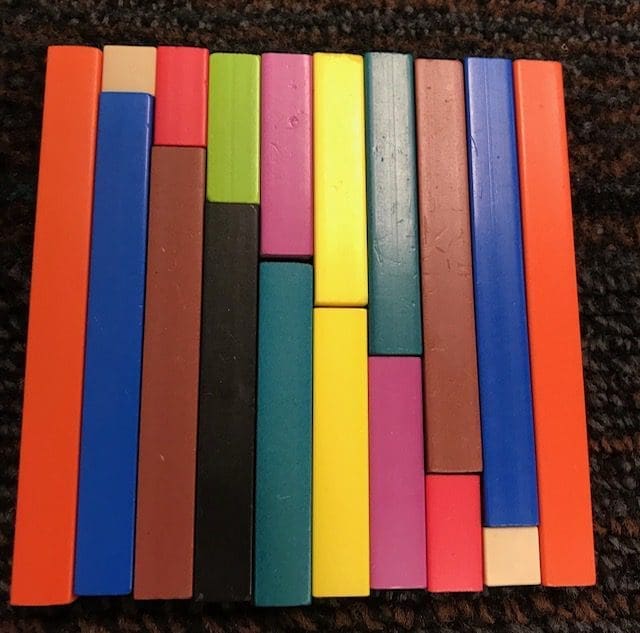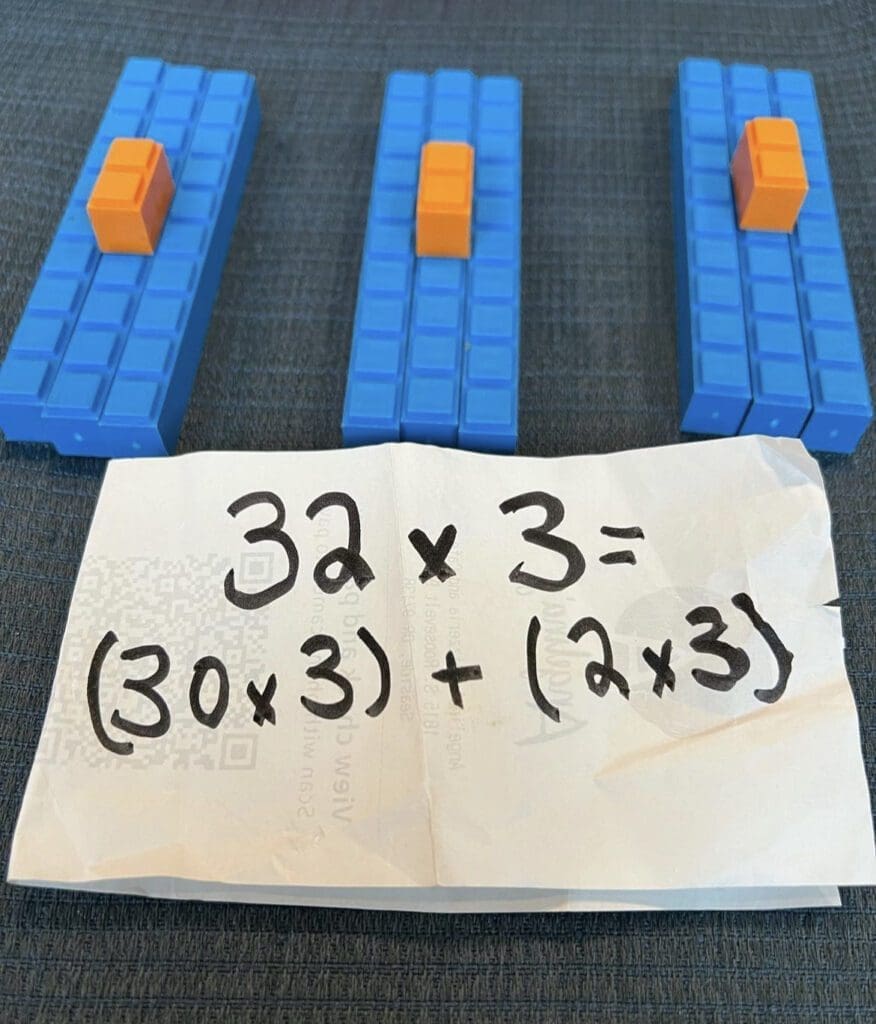
If I were to choose only one manipulative to have in the elementary school classroom, I would choose Cuisenaire Rods (or integer blocks such as Mortensen or Math U See that are based on the same concept). And yet most children I work with have never used or even seen these before.
Cuisenaire rods are a commonly used math manipulative in Europe, where a Belgian teacher invented them in the 1940s. Georges Cuisenaire was a violin player inspired by the relationship between music and math. The rods he developed are wooden or plastic rectangular blocks, ranging in length from 1 to 10 cm. Each length rod has its own color. The 1 cm and 10 cm blocks are the same as the base ten unit and rod blocks that are more common in United States classrooms. However, representing the different lengths is incredibly helpful in exploring math concepts.
There are so many uses for Cuisenaire rods that I will be writing several posts about how to use them. The first thing I use them for is permutations of ten with kindergarteners. Some of the other math concepts I teach using these are:
- place value
- all four arithmetic operations

- fractions
- decimals
- ratios and proportions
- area and perimeter,
- properties of polygons
Caleb Gattegno, the British mathematician who popularized their use, said “Georges Cuisenaire showed in the early fifties that students who had been taught traditionally, and were rated weak, took huge strides when shifted to using the material. They became very good at traditional arithmetic when they were allowed to manipulate the rods.”
Children love these blocks because they are fun to build and play with. Students will make many mathematical discoveries on their own just by playing with them. However, if you are interested in using the rods for explicit instruction, there are many, many strategies for doing so, which I will be writing about in follow up posts.
